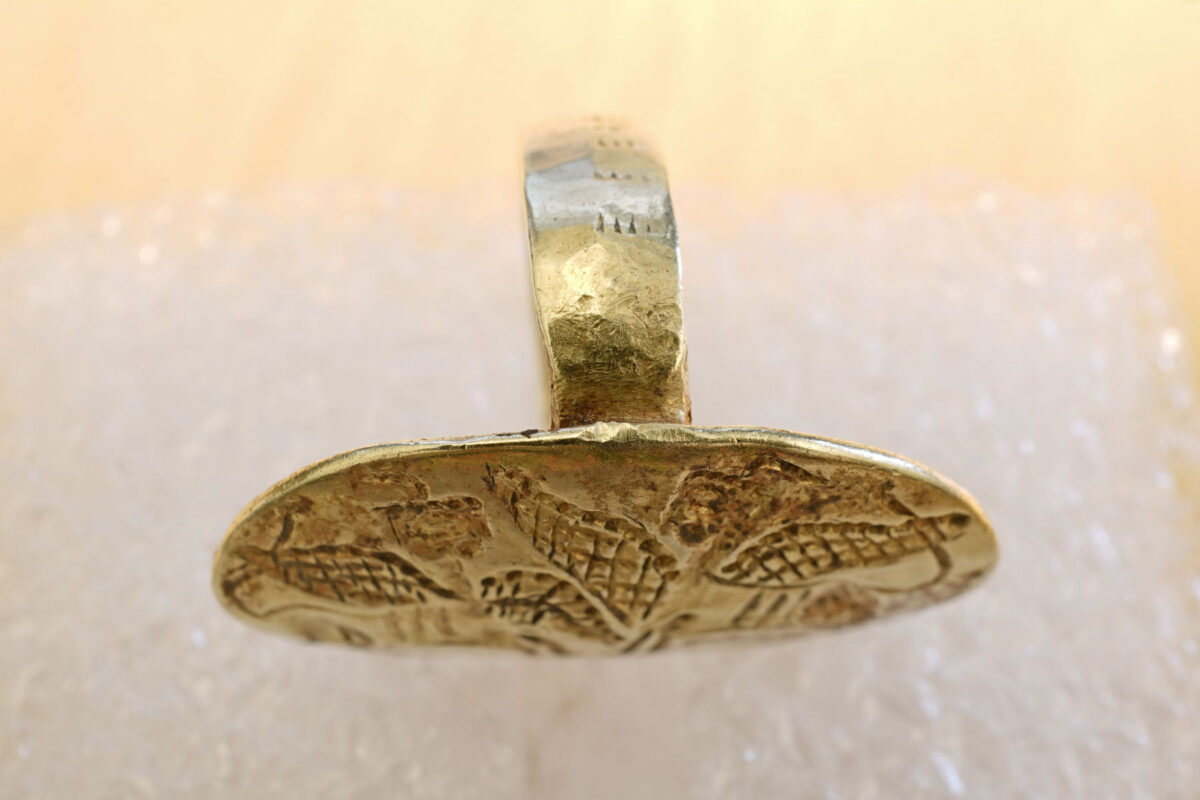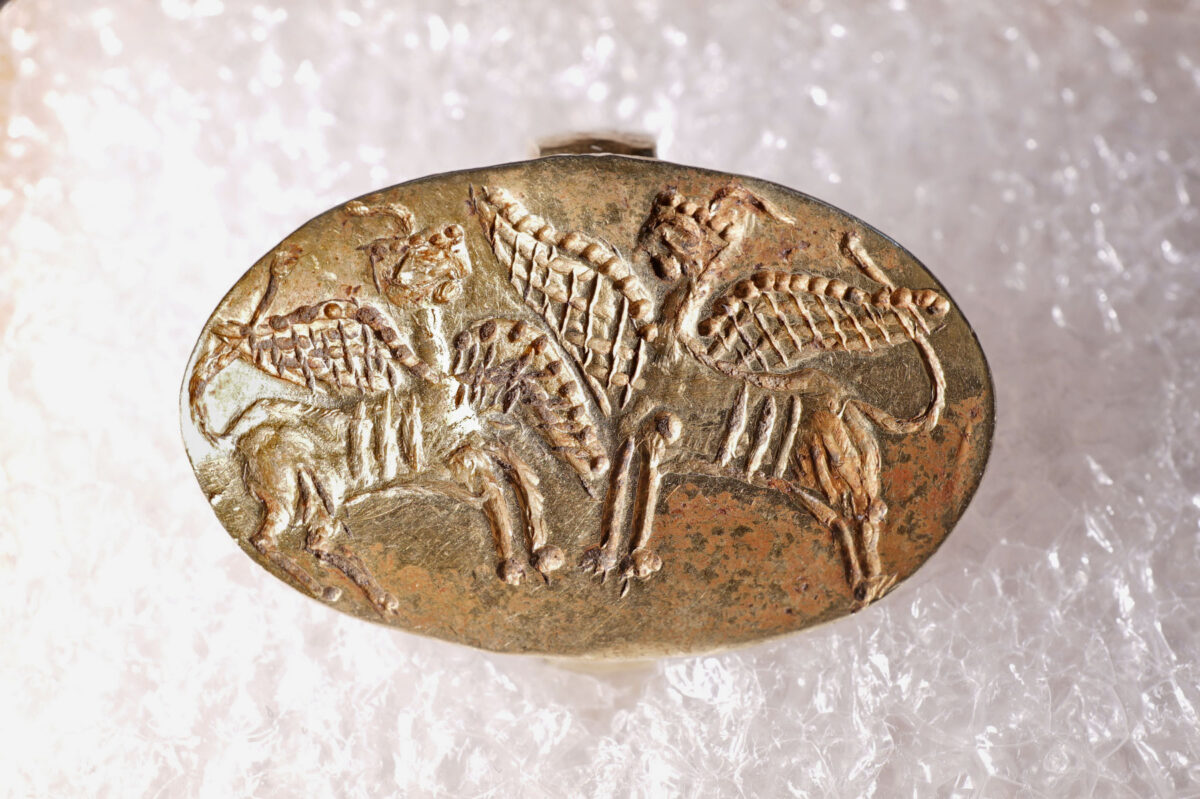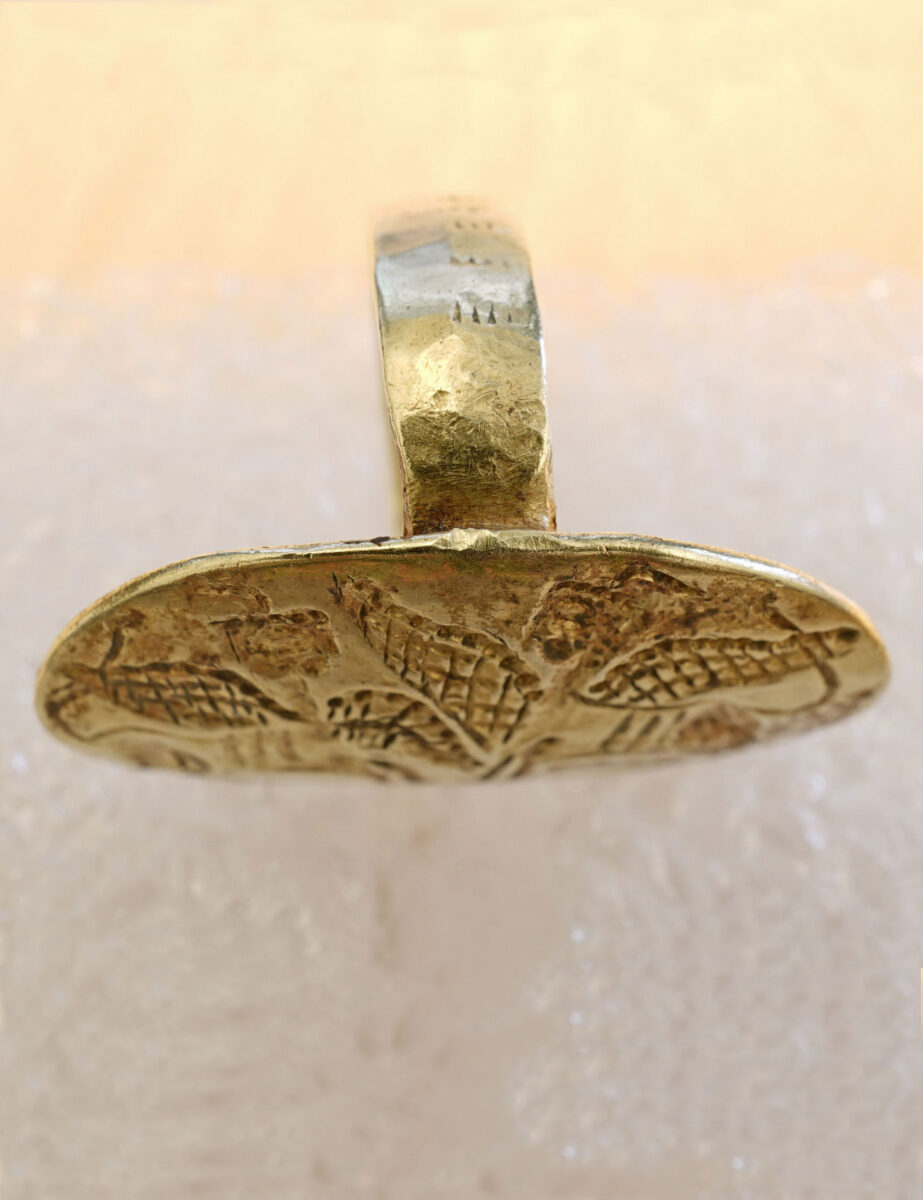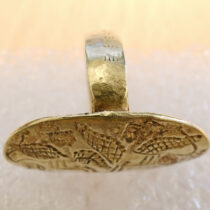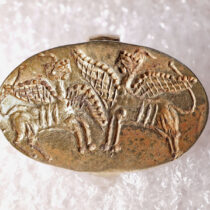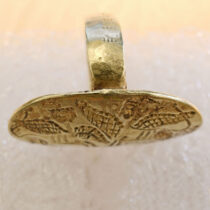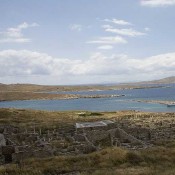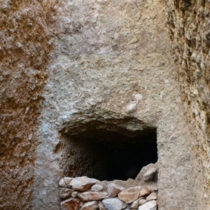A gold Mycenaean signet ring depicting a pair of sphinxes facing each other was returned to Greece by the Nobel Foundation, in a ceremony held on Thursday, May 19, in Stockholm.
The ring had been found in 1927, during excavations by the Italian Archaeological School at the Mycenaean necropolis of Ialyssos, Rhodes, among the offerings of Tomb 61. It was kept in the Archaeological Museum of Rhodes, as were all findings from systematic excavations on the island. During the German Occupation and Italian Rule in the Dodecanese, the ring was stolen from the Museum along with hundreds of antiquities, most of them coins and jewelry, which are still missing. Investigations to locate them at the time were fruitless, despite the mobilization of the Archaeological Service and the Police.
Following the path of illegal trafficking, the gold ring of Rhodes turned up in the USA, where in the 1950s or 1960s it was bought by Hungarian Nobel laureate Georg von Békésy. After his death in 1972, von Békésy’s entire collection was donated to the Nobel Foundation and the works of art were entrusted to various museums, depending on their type. The Mycenaean ring ended up in the Museum of Mediterranean and Eastern Antiquities, in Stockholm.
In 1975, the then Director of the Swedish Museum and distinguished archaeologist Carl Gustaf Styrenius discovered that the gold signet ring from the Mycenaean cemetery of Ialyssos was in the Museum’s collection and informed the Greek authorities. The ring however remained in Stockholm for reasons not clarified by existing files. Almost eight decades after having been illegally removed, the gold signet ring will once more be exhibited at the Archaeological Museum of Rhodes.
As Minister of Culture and Sports Lina Mendoni stated: “The Nobel Foundation and the Swedish State with their decision to return the Mycenaean ring to Greece, its country of origin, show their respect for modern Greece and the continuous efforts we are making for combating the illicit trafficking of cultural property. We are grateful for this gesture. It is an example of integrity and generosity for other institutions and museum organizations around the world”.
As part of the quest for information on the missing antiquities of World War II, an ongoing project these recent years, the Documentation Directorate reopened the case, searched for and gathered data from the archive of the Dodecanese Ephorate of Antiquities, the Historical Archive of Antiquities and from every other available source. The gold ring was fully documented as stolen from the Rhodes Museum and procedures began for its claiming.
In close cooperation with the Ministry of Culture and Sports, the Greek Embassy in Stockholm undertook negotiations with the Museum of Mediterranean and Eastern Antiquities and the Nobel Foundation. The two Swedish institutions welcomed the Greek request from the start and willingly provided archival material, as well as facilitating the progress of the negotiations. In this context, the ring was examined by experts from the National Archaeological Museum who went to Stockholm for this purpose, and its identification with the one stolen in Rhodes was confirmed, paving the way for its final repatriation.
